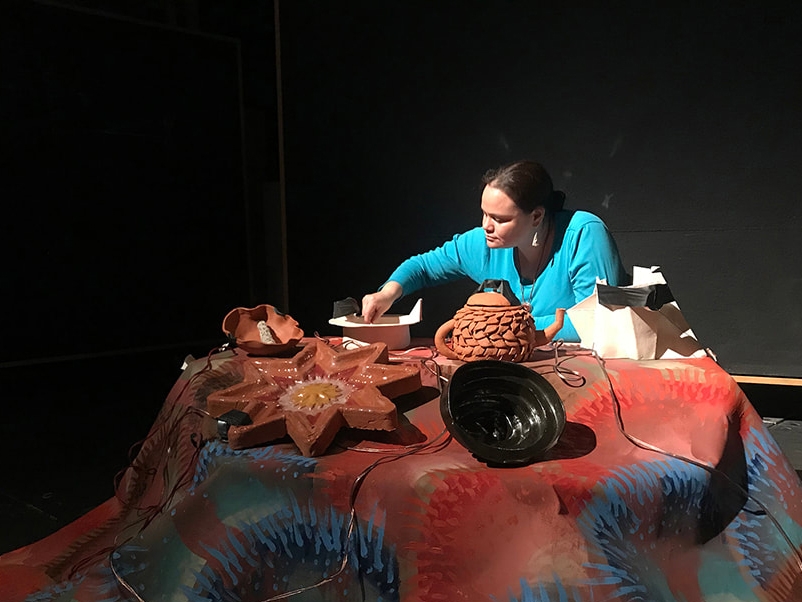The most important and time-consuming element of this project was the initial research. First, I revisited some research I did on the sound design for the movie Hereditary (Ari Aster, 2018) and how the composer utilized unconventional instruments and voice manipulation to create extended periods of dread throughout the movie. I also read a Freud paper on what constitutes the “uncanny”, and was especially inspired by his explanation that it is when heimlich (of the home) becomes unheimlich (un-homely). This is parallel to the feeling of a safe space, such as your home, becoming frightening during episodes of anxiety. Finally, I researched Shepard tones, an auditory illusion that makes tones sound like they are increasing or decreasing forever. Hans Zimmer composed for Dunkirk, and he utilized this illusion to create dread and terror during the intense battle scenes. Shepard tones are known for causing feelings of distress and can even spark physical reactions such as nausea, so I found that it was a perfect starting point for creating a fear-inducing soundscape.
I created the soundscape using found audio, my own recordings, and a shepard tone generator from MyNoise.net. My goal was to create the narrative of a panic attack, at least from my own perspective. Self-reflection upon this subject was difficult but I recognized patterns in the sequence of thoughts, much of which was rooted in isolation of the heartbeat and initial feeling of impending doom, and the proceeding downfall.
As for the visuals, I wanted them to aid in the feeling of descending into madness, so I researched some optical illusions. Spiral patterns and fractal zooms were most of my interest, as they can also by themselves invoke nausea and even visual distortions. I included electron microscope footage because during these panic attacks I found myself worrying about the most minute details of my body, and I began to notice feelings I hadn’t previously, like feeling the blood moving through my arteries, and pictured these processes in my mind. These images frightened me a lot, and reminded me of my fragility. I created the first visual of the video in Blender, taking inspiration from psychadelic visuals. It took me much longer than foreseen, but it was a valuable experience.
The installation was located in my bedroom, where I projected the sound and visuals to recreate the “rabbit hole” of panic and derealization as I attempted to sleep through it. The intensity of these stimuli will represent the magnitude to which a mental state like this can interrupt our daily life, even an activity that is as important as getting a good night’s sleep. Through this, I created an unheimlich atmosphere in the safest place in my house.

Responses